1967 Chevrolet El Camino
Finding a bone stock El Camino is akin to looking for needles in a Chevrolet haystack. I spent three months looking for the perfect showroom-condition El Camino that didn’t cheat the stock enthusiast with an unexpected Hurst four-speed or an engine that Chevrolet didn’t offer until two years after this vehicle was made. If you want bone stock, always inspect those serial numbers to make sure they match.
Bob Clark’s El Camino was as close as I could come to finding the needle. I also found an owner who’s learned some tough lessons about El Camino restoration. First of all, parts — even for a Chevrolet — are not that easy to find.
And that’s probably one reason why El Caminos are so popular to customize. What do you do if you can’t find the proper-size wheels?
Corvette rims work just fine, thank you. What are your options if your 327 engine dogs a bit from the line? A four-on-the-floor with a quick-shift kit ought to take care of that. You know, Chevrolet wasn’t particularly consistent with its name and engine badges on the hood and fenders, so a little customizing is difficult to distinguish from the genuine article. Customizing has easily overpowered restoration when it comes to El Caminos these days.
But Clark saw beauty, simplicity and a lot of potential in his raggedy 1967 El Camino, and was determined to restore it despite the obstacles.
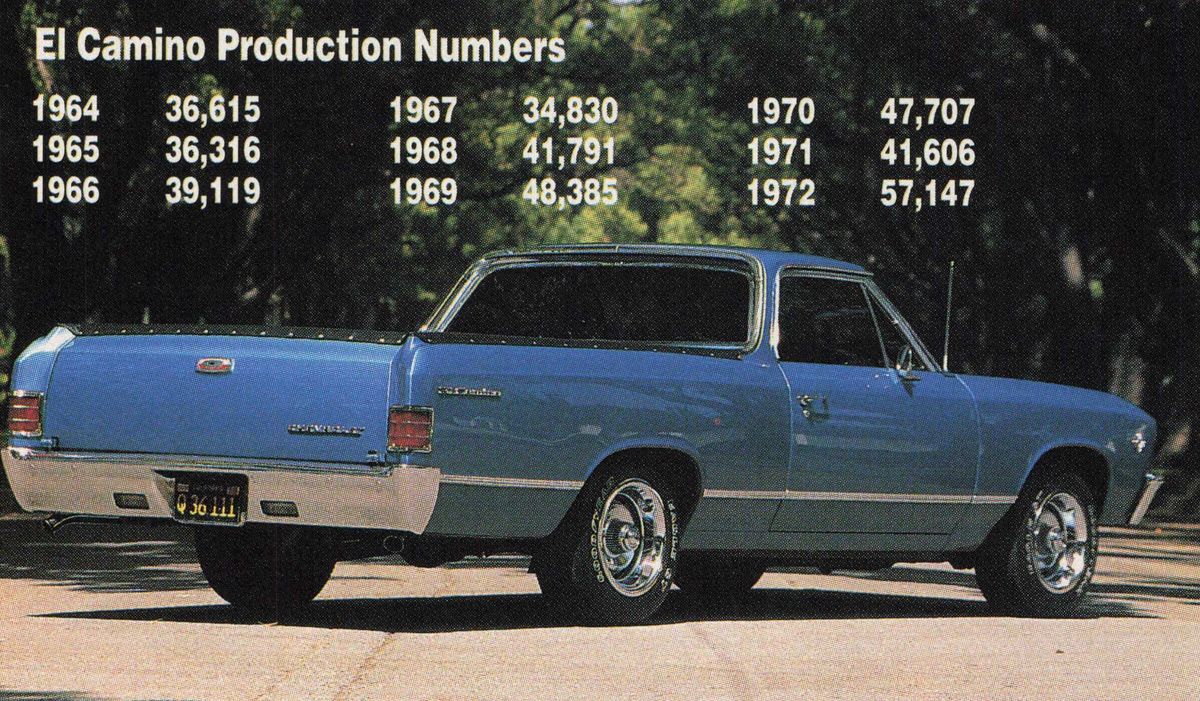
Clark purchased his car from the original owner in 1982 and spent nearly 10 years restoring it. More than a year of that time was spent in a hassle involving smog certification and registration. California began requiring manufacturers to install smog devices on their 1967 models. To register a 1967 model today, the original smog equipment needs to be on the vehicle and in working order.
Do you see a problem on the horizon? The California Department of Motor Vehicles referred Clark to an agency that helps owners locate out-of-date parts to correct the smog system, but as Clark understated, “We had a difficult time locating a smog pump and the accessories.”
After finally locating a company with the correct part, it wouldn't work after it was installed. He replaced it with another unit, but that one needed a check valve, purchased from a Chevrolet dealer, to make it functional. Patience is indeed a virtue.
Overall Clark’s restoration project provided challenges in that a 1967 El Camino is old enough to require the skills of an investigator when searching for body parts, but at the same time it is new enough that there are not many reproduction restoration parts available.
Clark is currently looking for replacement chrome molding. He is dissatisfied with what he has because on close inspection he can notice tiny dings and scarring. To enter the vehicle in high-caliber shows, new molding is paramount. But prices are steep. He discovered an eight-piece chrome bed-railing set still in the original box for $180. But molding around the cab’s doors and rear window are valued at about $500 for an NOS set. There are no reproductions available.
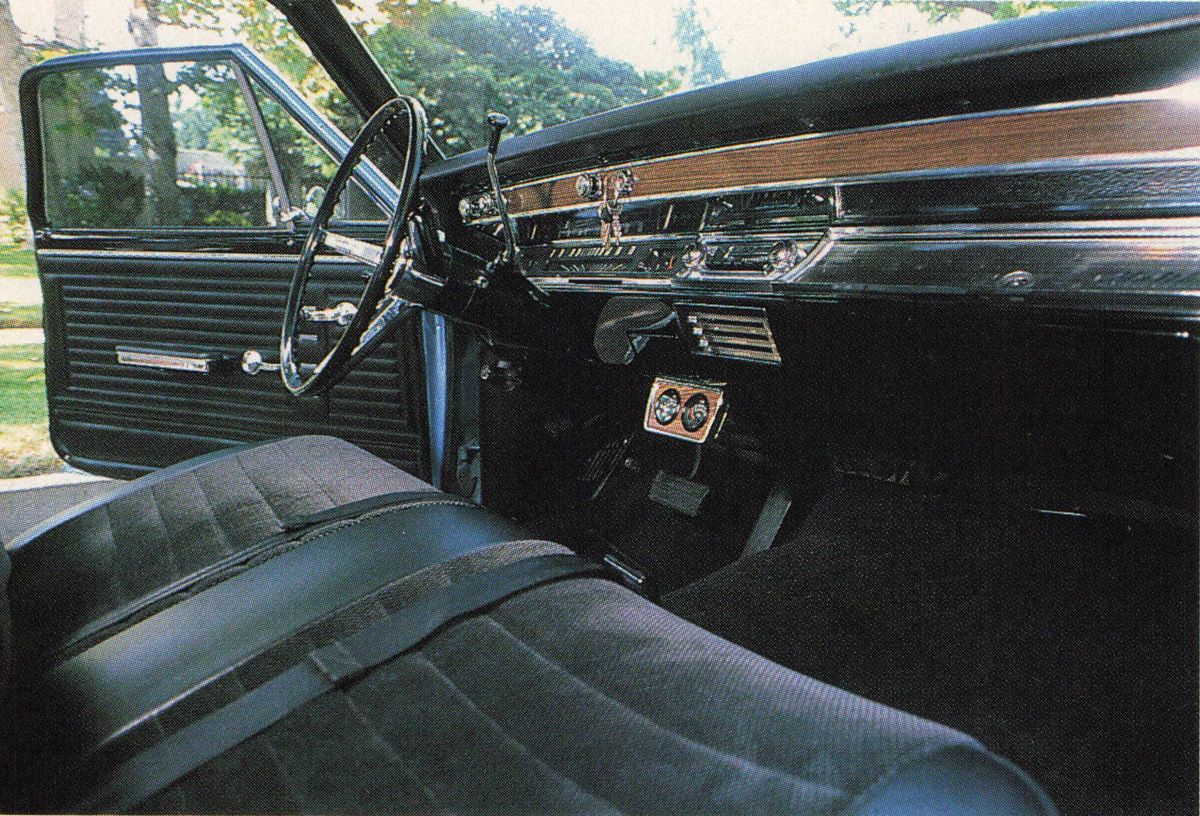
Despite heavy-duty use the first 15 years of its life, cancer was minimal in Clark’s El Camino. As a rule, El Caminos have a tendency to rust around the bottom corners of the windshield and the bottom portion of the fenders at the doors. In Clark’s vehicle the rust was cut out then replaced with new sheetmetal. The paint was matched by computer analysis and the vehicle repainted its original Marina Blue.
The interior refurbishing and a new bed cover was handled by Collins Custom Interiors of Upland.
The dashboard was repainted, but the crash padding is original and untouched. Wiring and suspension remained untouched.
Under the hood the engine needed a complete overhaul. The previous owner had trailered a boat for many years and the 327-cubic-inch engine was tired and smoking badly. Clark went to Nelson Automotive in his hometown of Upland, to have the 327 rebuilt to the 325 horsepower specifications. The steel crankshaft was aligned and balanced, a hydraulic camshaft was installed, and stainless steel valve seats and valves replaced the originals in order to defeat the valve-seat recession caused by running the engine on unleaded gas.
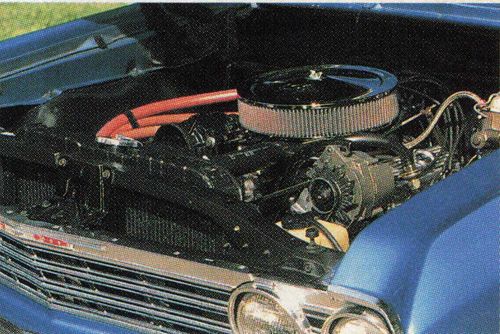
When Clark bought the car, the engine was equipped with an Edelbrock high-rise manifold and a fourbarrel Holley carb, a modified condition that is typical of many roadworthy El Caminos. Other than that, his vehicle was relatively unscathed by customizing.
The only changes Clark made from the stock offering of the El Camino were a set of Hooker Headers with Flow Master exhaust system and an aftermarket transmission cooler to give the two-speed automatic a longer life. He replaced the Holley carburetor and high-rise manifold with a standard Carter four-barrel carb and stock manifold.
It's a small concession to customizing that Clark takes the liberty to indulge. He still has a truck that is very close to authentic. So much so that it stands out in a crowd of El Caminos. “There are more °67s sought than any other year,” Clark said. “It’s the last style of the ’64 to 67 range. It has more features, more options.” It also proves that once you find the needle in the haystack, you never lose sight of it again.
Through the years
The El Camino made its debut on October 16, 1958, on the chassis of a Brookwood station wagon. In appearance the vehicle was readily identifiable as part of the Impala family. After two model years Chevrolet dropped the line when the Brookwood was phased out.

In 1964 the El Camino was re-introduced. It was now based on the Chevelle line with 121% inches knocked off the overall length from the original version. Cargo area was considerably larger, however, with 781 inches in length, adding about 3 inches. It also was 59% inches in width, adding almost nine inches. The new versions also were also 2% inches shorter in height than the older models.
The 1964-67 El Camino came in two versions, the El Camino and El Camino Custom. Offerings changed little over the years with the custom models sporting additional ‘moldings around the wheel openings, box, doors, windshield and hood. Custom versions also came with color-keyed pattern cloth and leather-grained vinyl with deep-twist carpet flooring and deluxe door and window handles. Standard models came equipped with all-vinyl seats. In 1964 interior colors came in fauna, aqua or red. Color would expand with each year.
Power options were limited during the first year. Standard models sported the 6-cylinder, 194-cubic-inch engine that debuted in 1962 for the Chevy Il. The standard V-8 was the 283 that generated 190 horsepower. But the two optional V-8s proved much more popular: the four-barrel 283 engine with 220 horsepower and the 327 engine with 250 horsepower. The big engine option was a trend that would continue through the musclecar era. It continues to be popular among the customized and the restored versions on the road today.
The options borrowed from the Chevelle SS were minimal during 1964: bucket seats, four-speed transmission and either the 283 or 327 engine.
The 1965 versions changed little from the previous year although Chevrolet now offered all the SS trim except the badge. The Chevelle name was dropped from the fenders. The eggcrate grille of 1964 was redesigned with horizontal bars.
Two sixes were now offered: cubic inch displacements were 230 and 194. While Chevrolet still offered the 283 V-8, the big news came with three separate ratings for the 327, now with 260, 300 or 350 horsepower.
By the time the 1966 El Camino was being planned, it was apparent that horsepower was related to increased sales. This was the year the 396 debuted. Depending on equipment, it could produce 325 horsepower or 360 horsepower. There still was no provision for a Super Sport model. The Chevelle convertible and coupes could be ordered with SS identification, but the El Camino with the same options, didn’t officially lay claim to the SS title. The 327 V-8s could be ordered with either the 3speed or 4-speed manual transmissions or Powerglide transmission. The 283 V-8s were available in either 195 or 220 horsepower ratings.
El Camino for the Mean Streets: 1968-72
When the El Camino was redesigned for 1968, it coincided with the height of musclecar mania on the streets of America. Street racers loved the idea of owning a high-performance vehicle that could serve as both a comfortable passenger car and weekend workhorse. The 1968-72 models had smoother lines. They also had a wider option of colors and accessories to choose from — including the vinyl top for the cab and the Super Sport badges never accorded the earlier models.
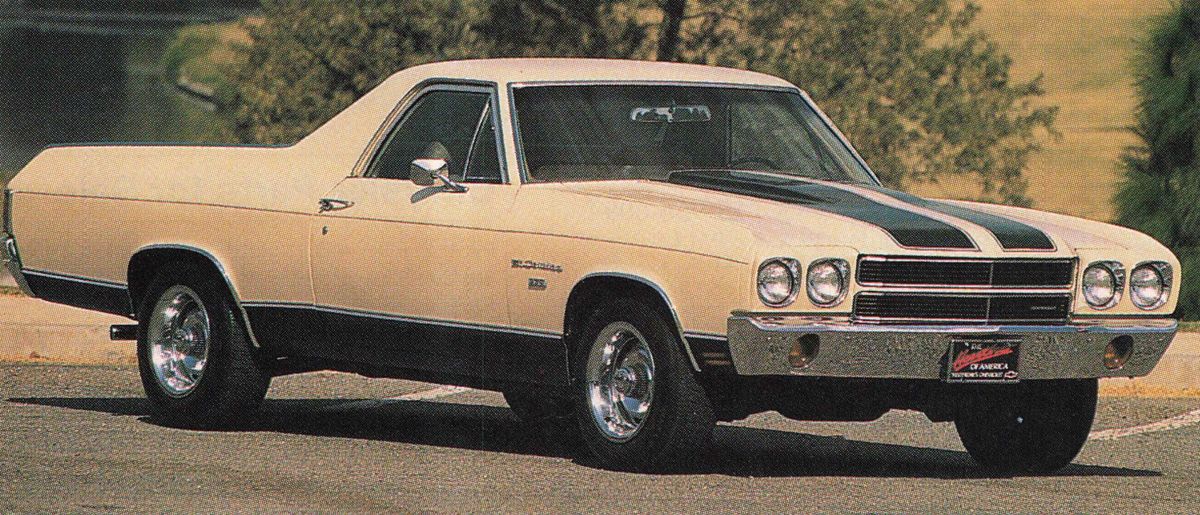
While the 1968-72 El Caminos receive a lot of attention from enthusiasts, — the earlier versions are immensely popular among collectors determined to keep their cars stock.
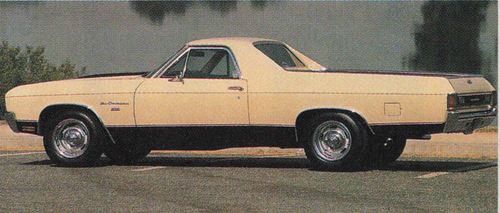
Ron Baker’s 1970 El Camino typifies what the era offered and is somewhat of a rarity. While Bak er installed a dealer-option SS hood (Chevrolet offered three types of hoods to El Camino buyers — the SS hood with racing stripes, standard flat hood or the cowl induction hood usually reserved for the 396 and 454-cubic-inch versions), This vehicle otherwise is true to factory specs. Baker is another of that rare breed of El Camino owner who displays restraint with a car that more often than not is a likely candidate for major modifications.
His El Camino was in remarkably good condition when he purchased it four years ago. Its rebuilt 350 cubic-inch V-8 engine generates 300 horsepower.
Baker claims it still “purrs like the day it left the shop” even after 20,000 miles. Because its original color of Desert Sand was impossible to find, he came close to matching it with a General Motors color called Light Mesa Tan.
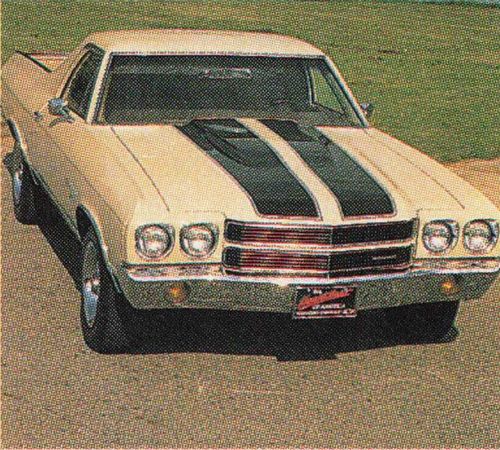
Everything else is pretty much the way it left the showroom floor. The interior is original except for the carpet. The stock Chevy color is referred to as Saddle. V-8s had become so — popular by 1970 there was little demand for the sixes. Chevrolet dropped the 230-cubic-inch version but kept the 250. The year also saw General Motors lift its ban on engines larger than 400 cubic inches.
The new 396 engine, with a slightly larger bore, was now actually 402 cubic inches, however, the 396 designation remained. The biggest muscle came from the massive 454 with either a 360- or 450-horsepower rating. These new powerplants boosted the number of V-8s offered for the 1970 El Camino to seven. The reliable six and modest 307 provided the standard engines. The optional engines were the two 350s, the 400, the 396, and the two 454s. In his book, “Chevrolet El Camino: 1959-1982,” Donald F. Wood wrote that the 1970 El Camino was perhaps the most popular El Camino for customizing.
“In the course of preparing this book, | came across many more owners of customized 1970 models than held true for any other model year.” From a performance standpoint, it’s not difficult to understand why. A pair of 454s, the 396 and the 400 provided an ample selection of high-performance engines. Based on styling the 1970 model was the last year until 1976 that two pairs of - headlights were offered.
It’s no wonder that given the near perfect blend of performance and styling that 1970 would see a heavy emphasis on customizing.
















